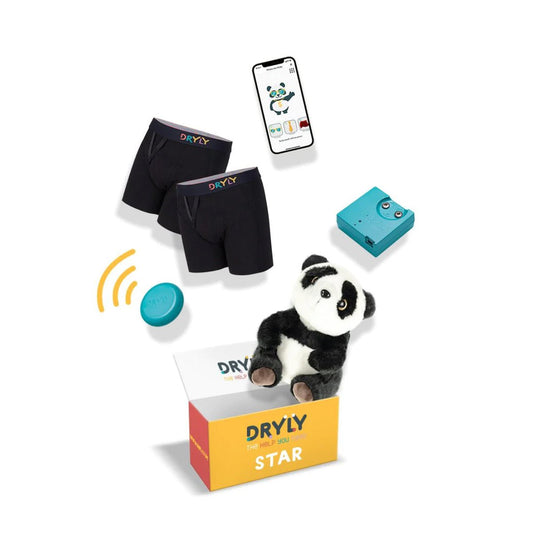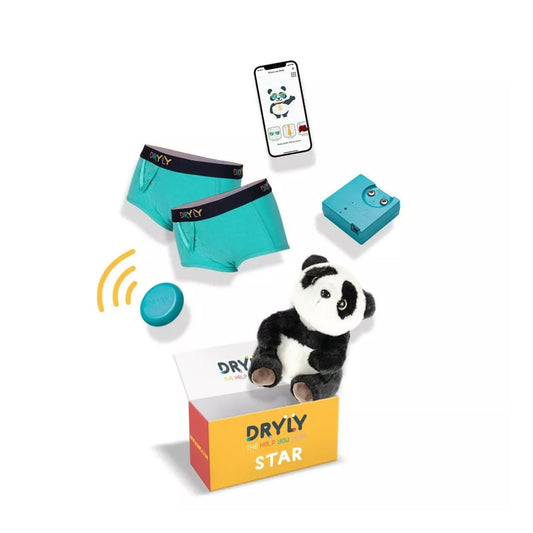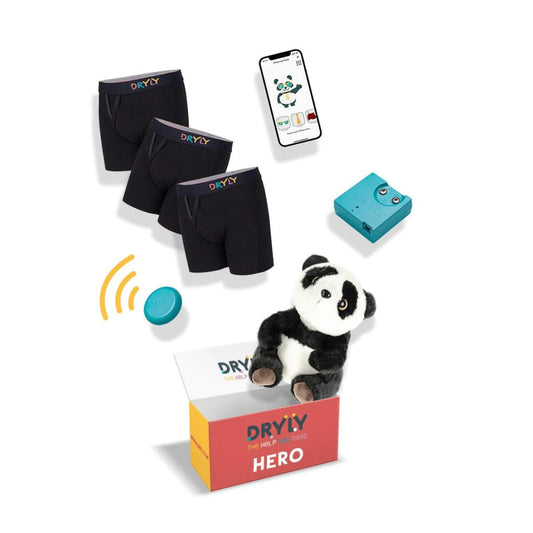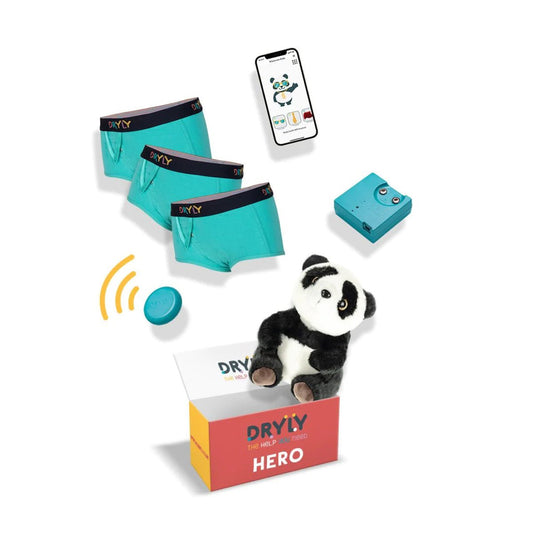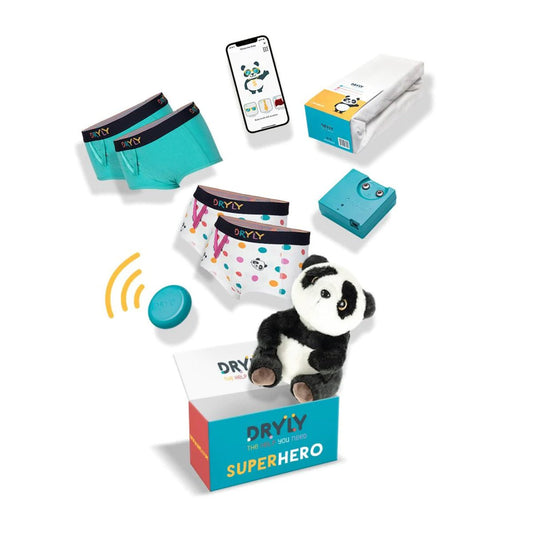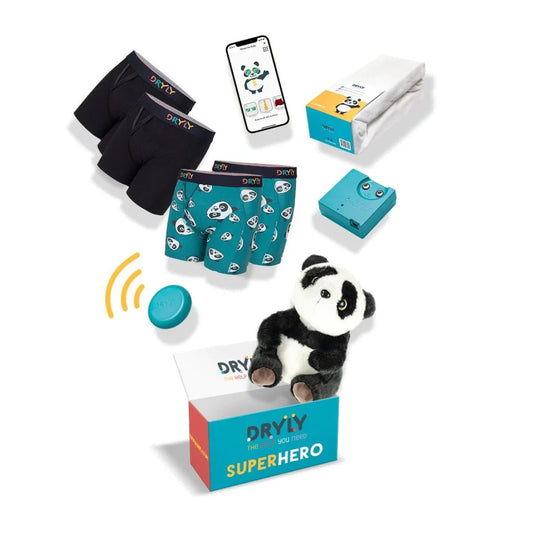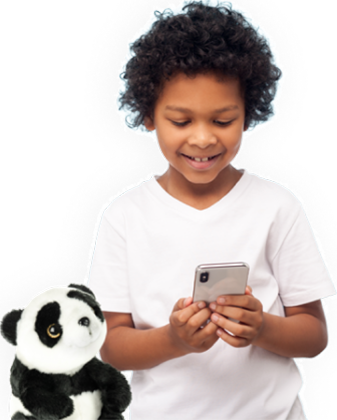Potty training
Becoming potty-trained is an important event in your child's development. For some children this process comes naturally, but for others it is a lot more difficult and these children could use some potty training. Especially when a child is in elementary school and still has many accidents during the day. This can create awkward and embarrassing situations. Children are often very direct among themselves and comments from classmates can make your child insecure and sad. In addition, it is common for teachers to ask parents to come to school to change their child.
Fortunately, help is available. If you are concerned about your child's potty training, you can visit a pee clinic or specialist. They often offer a potty training program that teaches you and your child step by step how to do it, initially during the day and then at night.

Daytime urination training: learning to feel, recognize and react
The training teaches your child to recognize and respond to bladder signals. The goal is for your child to go to the toilet independently and on time, without going too early (often small bits of pee) or too late (causing accidents).
Your child will learn the following things:
- How to pee: Relaxing, in the right position and peeing out in one sitting
- When to pee: Learning to listen for the signals of a full bladder
- How often you need to pee: Learn that you need to pee about seven times a day
Good sitting position is hugely important for a child, this so that peeing is as easy as possible. Your child should sit with both feet flat on the floor, possibly with an ottoman and relaxed. It is best to sit with legs spread and to put the hands on the knees. While urinating, your child should not push, but rather exhale quietly.
Sometimes it helps to agree on a code word. When you or your teacher says this word, your child knows to take a moment to reflect on what the body is feeling. This teaches the child to make his or her own decisions about when to go to the bathroom.
It is also important for your child to drink enough fluids, 1 to 1.5 liters a day. This allows the bladder to be properly trained.
Urinal training at night, dry nights with the help of the bedwetting alarm
For many children it is a very big step to be housebroken during the day, but not everyone manages to stay dry at night right away. In those cases, nighttime potty training with the help of a bedwetting alarm can be a godsend.
For example, with the help of a bedwetting alarm, a bedwetting alarm helps children recognize the signals of a full bladder even during sleep. When your child begins to urinate in bed, the bedwetting alarm immediately gives a signal. This teaches your child to wake up at the urge to go to the toilet independently.
Important in nighttime urine training is the child's motivation, an effective and motivating tool for this is the Dryly bedwetting alarm. Bedwetting alarm training is made positive and motivating with Dryly.
Training together works best
Thus, potty training and potty training is ultimately not a matter of one method or a quick fix. It requires patience, repetition and a positive approach. By actively supervising your child both during the day and at night, you'll build more self-confidence and independence together. Whether you are just beginning training or have been at it for a while, know that your child is not alone and that it is possible to guide him/her together!
Each child learns at his/her own pace
Potty training is a process in which each child has his or her own pace. Therefore, comparing with other children does not help, what matters is that you make steps forward together. Encourage your child when there are setbacks, and above all, stay positive. Be it dry days or dry nights. Stay motivated and help your child move forward!
What is the Dryly bedwetting alarm method?
Dryly was founded with the belief of making the solution to bedwetting more fun. Through our positive approach to the bedwetting alarm with panda bear Wizzu, a fun and convenient app for the child and parent, and a fun look compared to other medical bedwetting alarms.
By putting these components together, 93% of children are already dry at night within 6 to 8 weeks by using the Dryly pee alarm!
Frequently asked questions causes of bedwetting
What are the most common causes of bedwetting?
Bedwetting is often caused by a combination of factors such as a small bladder, deep sleep, heredity and sometimes stress.
Consequently, these are the most common causes.
Can bedwetting occur without a clear cause?
Yes, in many children there is no obvious medical cause, it may have to do with bladder and nerve development.
Does heredity always play a role in bedwetting?
Not always, but children with history are more likely to have bedwetting.
-
Dryly® Bedwetting Alarm Star
Normal price 199.99Normal priceUnit Price / per255.95Offer price 199.99- Guidance via mobile app
- Underwear plain 2-pack
- Optional vibration function
- Wizzu (panda cuddly toy)
- Transmitter & receiver
Sale -
Dryly® Bedwetting Alarm Hero
Normal price 229.99Normal priceUnit Price / per278.94Offer price 229.99Most chosen- Guidance via mobile app
- Underwear plain 3-pack
- Optional vibration function
- Wizzu (panda cuddly toy)
- Transmitter & receiver
Sale -
Dryly® Bedwetting Alarm Superhero
Normal price 259.99Normal priceUnit Price / per330.92Offer price 259.99Best deal- Guidance via mobile app
- Extra mattress protector
- Underwear plain 2-pack
- Underwear print 2-pack
- Optional vibration function
- Wizzu (panda cuddly toy)
- Transmitter & receiver
Sale
Frequently asked questions toilet training at night
From what age do you start toilet training at night?
There is no set age at which to begin nighttime potty training. Each child develops at his or her own pace. A good time is when your child is potty trained during the day, and has motivation to work on this himself. This usually begins from the age of 5 years old.
What if my child continues to bedwash at night despite nighttime training?
If bedwetting persists longer, such as after age 6, there may be nocturnal enuresis. This is often not psychological, but physical in nature. A bedwetting alarm is an effective aid. When in doubt, you can always consult a doctor.
Does it help to drink less before sleeping?
Limiting fluid intake before bedtime can sometimes help, but it is important to do so in a healthy way. Give your child plenty to drink during the day, and avoid sugary drinks in the evening. Always make sure your child pees before bedtime!
Is the use of a bedwetting alarm effective?
Yes, pee alarms have been used effectively in nighttime potty training for decades. A bedwetting alarm helps children become aware of the sensation of a full bladder. This helps children gain a lot of confidence and speeds up the process considerably.
